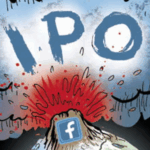 Software-as-a-Service yield optimization platform Dynamic Yield has taken a top-down approach to yield optimization, landing big-name retail and publishing clients in the midst of a move from Tel Aviv to New York this year.
Software-as-a-Service yield optimization platform Dynamic Yield has taken a top-down approach to yield optimization, landing big-name retail and publishing clients in the midst of a move from Tel Aviv to New York this year.
After landing $2 million in funding in 2013 from investors such as The New York Times and Eric Schmidt’s investment firm, Innovation Endeavors, co-founder and CEO Liad Agmon established Dynamic Yield’s New York office at the newspaper’s headquarters.
Although the company initially focused on enterprise clients, Dynamic Yield is rolling out what Agmon called a “self-service” offering in six weeks, targeting companies with less than $1 million in revenues.
Dynamic Yield’s growth represents an increased demand for content management systems (CMS) that, in Agmon’s view, act more like ad servers and “deploy ad serving-like algorithms.”
AdExchanger sat down with Agmon to discuss his company, its work with Google and expectations for the future.
What problem do you solve?
We are basically the ad server for content for our customers. (Marketers) are paying more and more money for the traffic coming into their site, but there is no optimization of what happens after the user clicks on the ad and arrives to their site. And this is where we excel. We are like an ad server but for the on-site content.
Who are your customers?
We have three main categories of customers: publishers, like The New York Times, retailers and Web marketers, which are any company that acquires traffic, brings users to a landing page and has some KPI – acquisition of a customer, or a lead or just literally buying a product.
For each of these it’s a different use case. Let’s take, for example, a big casino that uses us for their landing-page optimization. They have about 40 different categories of landing pages at any given moment. They have horse betting, they have soccer, they have cricket, they have all types of sports. To manage all of these landing pages, they had three full-time employees before they switched to our platform, and now we are basically managing it. We work out what website (users) arrived from, then our engine makes a real-time decision of what landing page to show the user in order to increase conversions. We take what happens after the click and we automate the decision-making in order to increase conversions.
For retailers, we’re making a different type of decision. For example, for Memorial Day all of the big retailers had sales. When (a user) clicks on their ads, where do they send (them)? Do they send them to the homepage or do they send them to the category page of golf clubs? We are being used by retailers to optimize what happens post-click.
Think about it as like a bit.ly, the URL-shortening experience where, instead of choosing one URL, you are choosing four, five different options and the algorithm makes the decision in real time where to send the traffic. What we do is collect a lot of data about users and how they behave and how they convert. We take into account all of your metadata, like your IP – Are you from New York or San Francisco, are you using an iPhone or Android, what is your gender, what is your age group? Any type of first-party or third-party data we can tap in to, and we make the decision based on that.
For marketers it’s been very hard to quantify these decisions. What we do is help them quantify in real time and to optimize it without being data scientists and without being engineers. The biggest fear of the marketer is to have to ask engineers for a favor. Everything that involves engineering – that’s a battle. The entire company relies on these engineers, and unfortunately product always has precedent over marketing in most companies. The marketers’ requests always get pushed back. But they need to get real-time results. They are going to get hammered if Memorial Day weekend sales aren’t performing as well. It doesn’t help me (as a marketer) if I arrive in the office on Tuesday morning and say, “This campaign works better than that one,” or “That variation works better,” (because) the sale is over.
What is your addressable market?
The addressable market (for website and post-click optimization) is huge. We estimate it to be $7.5 billion in five years. The way you can do the calculation is as a percentage of the global spend on online marketing. If you are spending $100,000 on the campaign, how much do I need to spend on optimizing after the use clicks on the (ad)? I believe that the golden ratio is about 5% to 10% of the campaign spend will be on optimizing. This number will end up growing.
There is a comparable benchmark to a company like Kenshoo. Kenshoo, which is doing pay-per-click campaign optimization for Google, traditionally charges about 3% of the campaign budget to optimize the campaign’s results.
How do you see Google’s CMS project – is it as a competitor in the future?
One of our investors and advisers is Jeff Epstein, who was the CFO of DoubleClick. Through him we have a very good relationship with the Google folks. Within our industry the most common word is “coopitition.” In general, Google has this omnipresence on the entire industry and everyone is curious about Google’s next moves, but so far we’ve been cooperating with them and it’s been very successful. I’m not worried about them as a direct competitor but I think we have the same vision for the space.
[Agmon added via email, regarding the company’s work with Google: “We have been working closely with publishers to increase revenue of (DoubleClick for Publishers) ad serving by adding user behavioral data; we are also in a certification process as we want to serve our smart tags on Google’s display network.”]
What are your future plans for the company?
We will eventually get acquired. With this industry, it’s either you grow super fast and then you become a public company, or one of the big guys will say, “I really need this as part of my portfolio.”
Our space has been so hot – you think of Oracle acquiring BlueKai for data. We have some of the biggest data sets in the industry, which we are using for optimization. We are serving more than 3 billion page views per month. That’s a lot. Oracle has been very interested in this space, Adobe is very interested in this space, IBM is interested in this space, Google and AOL.













